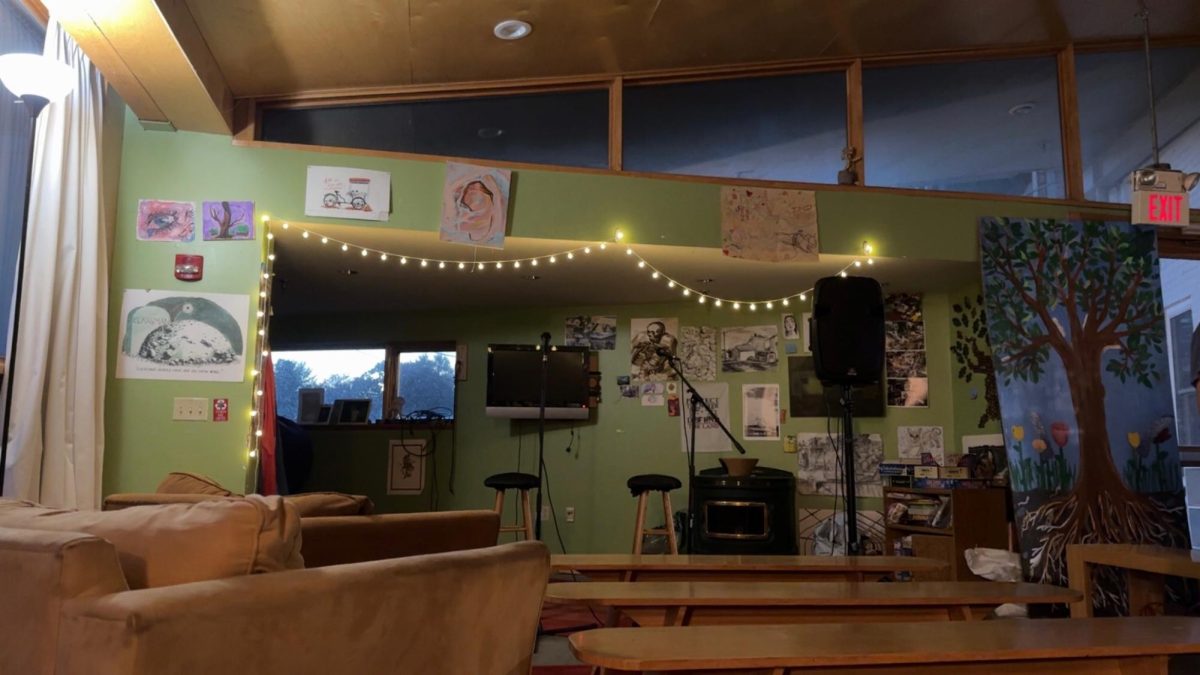The student-run safety shuttle is a uniquely Dickinson creation which has come under threat in recent years. Dickinson is one of few colleges in the United States to have a solely student-driven safety shuttle system for after-dark transportation around campus. However, in the last two years, staffing problems have caused unpredictable, increasingly frequent shutdowns of the system.
The safety shuttle was founded in fall of 2010 and has since cemented itself as an essential part of Dickinson life. The shuttle, which runs seven days a week, begins its route at Drayer, has stops at all major dorm buildings (including the Factory apartments), Denny Hall and ends its route at Walmart. The shuttle originally ran from 5:00 p.m. to 2:00 a.m. but after COVID-19, had its time shortened to a six-hour window between 6:00 p.m. and midnight. Exclusively students drive the shuttle, with DPS Officer Jill Swartz overseeing the shift management of the student drivers.
The shuttle’s problems began during the last academic year. Swartz, who also acts as fleet coordinator, said that only four students staffed the shuttle last year, with two of them having graduated since. This left Swartz with two drivers left over from last year, and one new driver who signed on this year. Three drivers are not enough to run the shuttle with regularity.
Swartz said that the shuttle is normally guaranteed to run Monday to Thursday at posted times, however issues arise during the weekend. “Students want to sign up, but get invited to things,” said Swartz. She also explained that she understands why students who work the shuttle call off on the weekends, she just wishes they would at least cover, “one [weekend] shift a month.” Currently the students who drive the shuttle are paid $11.25/hr, which is four dollars over the minimum wage of $7.25/hr, but less than other jobs on or around campus. Schwartz tried to raise the drivers’ wages, but was denied by the college.
Swartz believes that the safety shuttle is an essential part of both campus culture and safety, and that colleges who can offer the service should implement it. Schwartz said she is “in between a rock and a hard place” in her overseeing of the program. Attempts to recruit new students have been unsuccessful, despite the efforts of DPS and Swartz. Even with booths at both the move-in events and resource fair, few eligible candidates have contacted Swartz, and those who have contacted her have not continued to express interest.
A major problem with staffing the shuttle is, according to the college’s insurance plan, first-year students are not able to drive the shuttle. Those who apply must have possessed a driver’s license for three years, attend an online program and pass a road test.
The road test serves as a way for Swartz to make sure students are comfortable with driving a larger vehicle on the road, as she does not want to place any students into a situation where they feel uncomfortable. She has tried to ask some of the daytime shuttle drivers to help with the safety shuttle, but feels it is better that it stays in students’ hands and feels the daytime drivers already have enough on their hands.
In Swartz’s opinion, there are further social factors that prevent more students from registering to drive the shuttle. She admits that most people are “done for the day” at around 6:00 p.m. and certainly after 9:00 p.m. Another major factor of driving the shuttle is the responsibility for the safety of its passangers. This includes making tough decisions like denying a student from riding the shuttle if they are going to pose a threat to others, as well as the potential of having riders who are heavily intoxicated or in need of medical attention.
To encourage students to drive the shuttle, Swartz says, “support each other. Even if it is only one shift a week. Make sure your friends get around campus [safely after dark]. [The shuttle will] run as best as students allow it.” If you are at all interested in helping run the shuttle, please respond to Swartz’s emails, or email her directly. Driving the shuttle is an excellent resume builder, with Officer Swartz saying that she would be “excited as an employer” to see a student who took on such responsibilities.
Even if the shuttle is not running, DPS offers numerous other programs to allow students to feel safe walking campus after dark. They run a Safe Walk program, which provides DPS escorts late at night, as well as the LibSafe app, which allows you to, with permission, track your friends to make sure they arrive at their destination.
Swartz ardently thanks the drivers she currently has, saying it is not their fault that the shuttle is running irregularly, as they are college students who should be allowed to live their lives.






